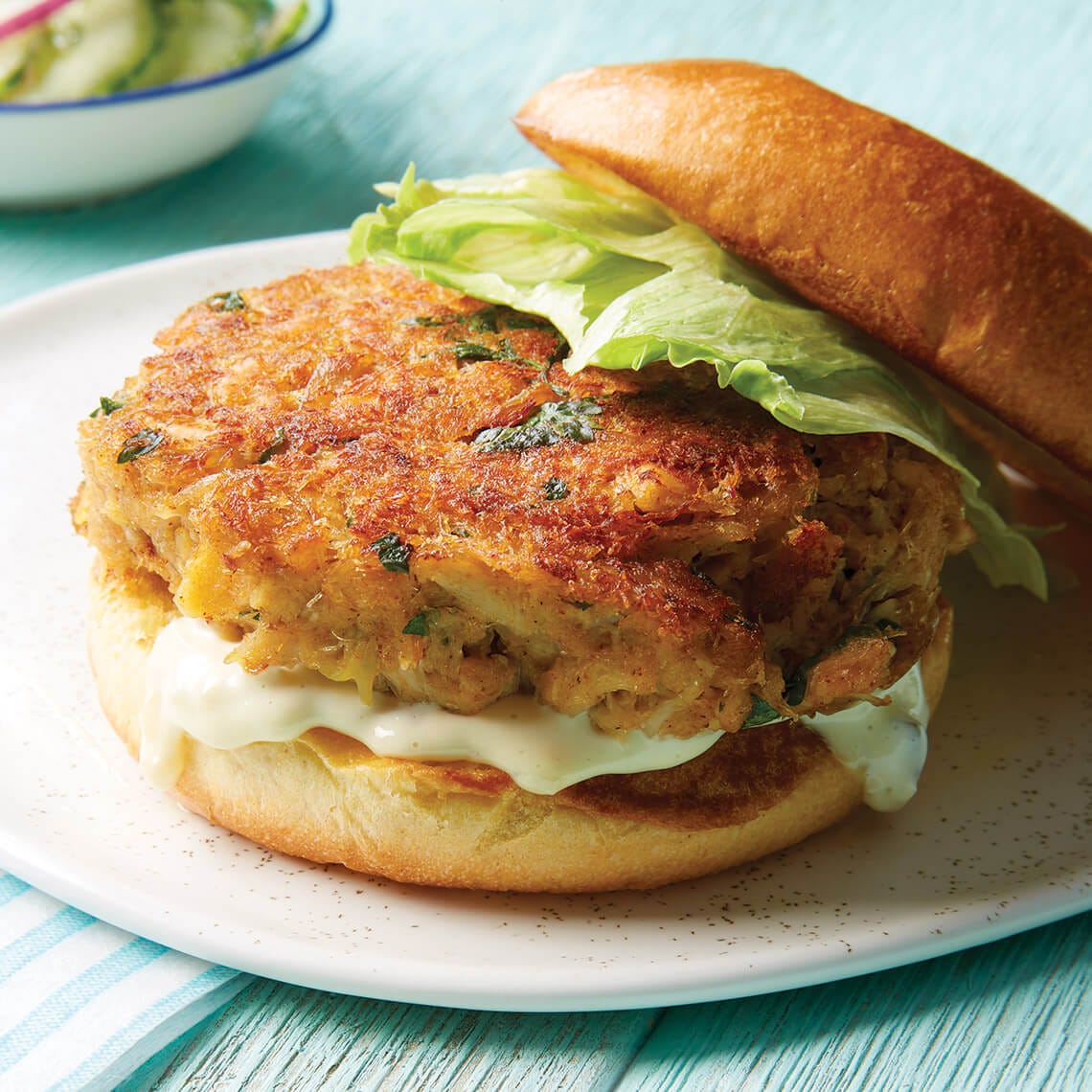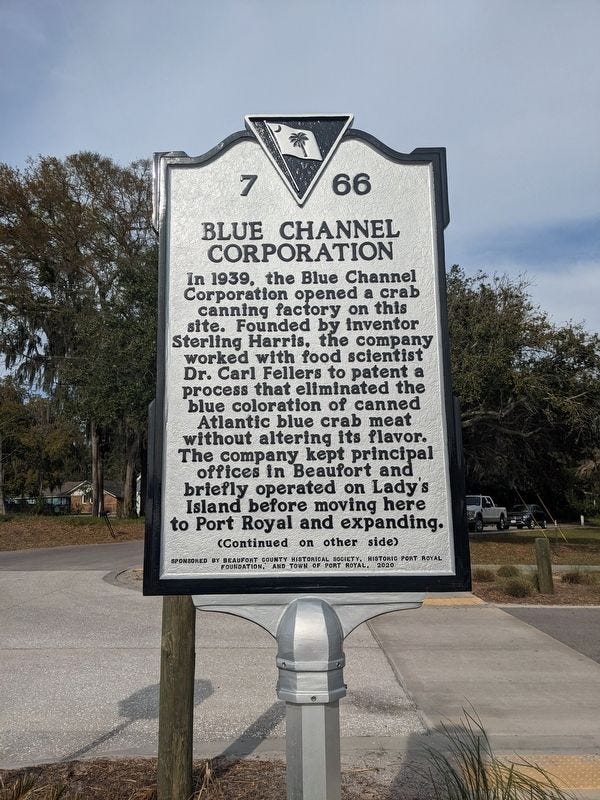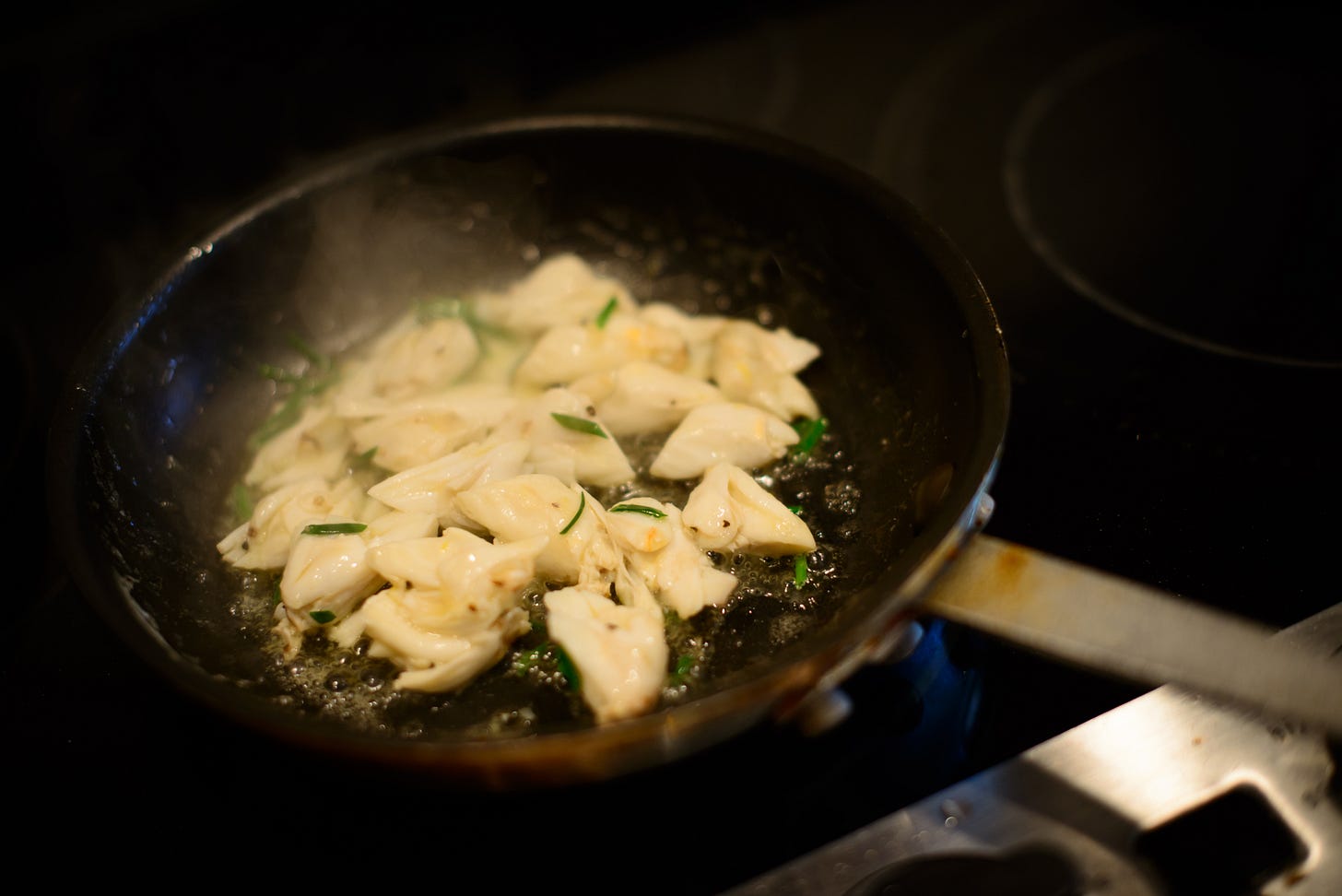Blue Crab Heaven
Craveworthy dishes from the golden age of blue crab.
If you’ve ever wandered around the sleepy, salt-misted streets of Port Royal, South Carolina, you might’ve come across a sign marking the site of the Blue Channel Corporation that opened in 1939. It’s a spot that’s as much a part of Lowcountry history as our shrimp boats and spartina grass.
I was fortunate enough to have lived here in the 80s, and crab was served nearly everywhere for all occasions. I still have a collection of recipes from back in the day that I will be sharing.
As you approach the docks at low tide, one smell transcends all others - pluff mud. It’s the mother sauce of all things Lowcountry, a fertile base from which the bounty of the marsh springs forth to create the ecosystem that makes this place unique. Pluff mud is an oozy, viscous, dark brown substance. Be careful - it’ll take the topsiders right off your feet. It’s primarily generated from decaying Spartina grasses and the odor from the anaerobic bacteria consuming them. It also includes the decaying material from all the life it supports, including fish, crabs, and shrimp. It serves as the root bed for our beloved oysters. Once the aroma hits you, you’ll call it - the smell of home.
Founded by inventor Sterling Harris, the Blue Channel Crab company worked with food scientist Dr. Carl Fellers to patent a process that eliminated the blue coloration of canned Atlantic blue crab meat without altering its flavor. The company kept principal offices in Beaufort and briefly operated on Lady's Island before moving to Port Royal and expanding.
For years, Blue Channel was the nation's top producer of Atlantic blue crab and one of the largest crab packing firms in the country.
The crabs processed here were caught and picked primarily by African American men and women of the local Gullah community, who had long crabbed and fished along the Sea Islands. Blue Channel moved its canning operations to the Beaufort Industrial Park in 1978 and closed in 1990.
Back in the mid-1980s, this place was buzzing. Port Royal, like much of the Beaufort area, had long been tied to the water. Fishing, shrimping, oystering—if it came from the sea, locals knew what to do with it. The crab factory was one of the hubs of all that activity. It wasn’t fancy, but it got the job done. Workers—mostly local folks—would spend long, hot days picking blue crab meat by hand, packing it into containers, and getting it ready to ship out to markets far and wide.
Keep reading with a 7-day free trial
Subscribe to The Diary of Southern Lifestyle Author Pat Branning to keep reading this post and get 7 days of free access to the full post archives.




